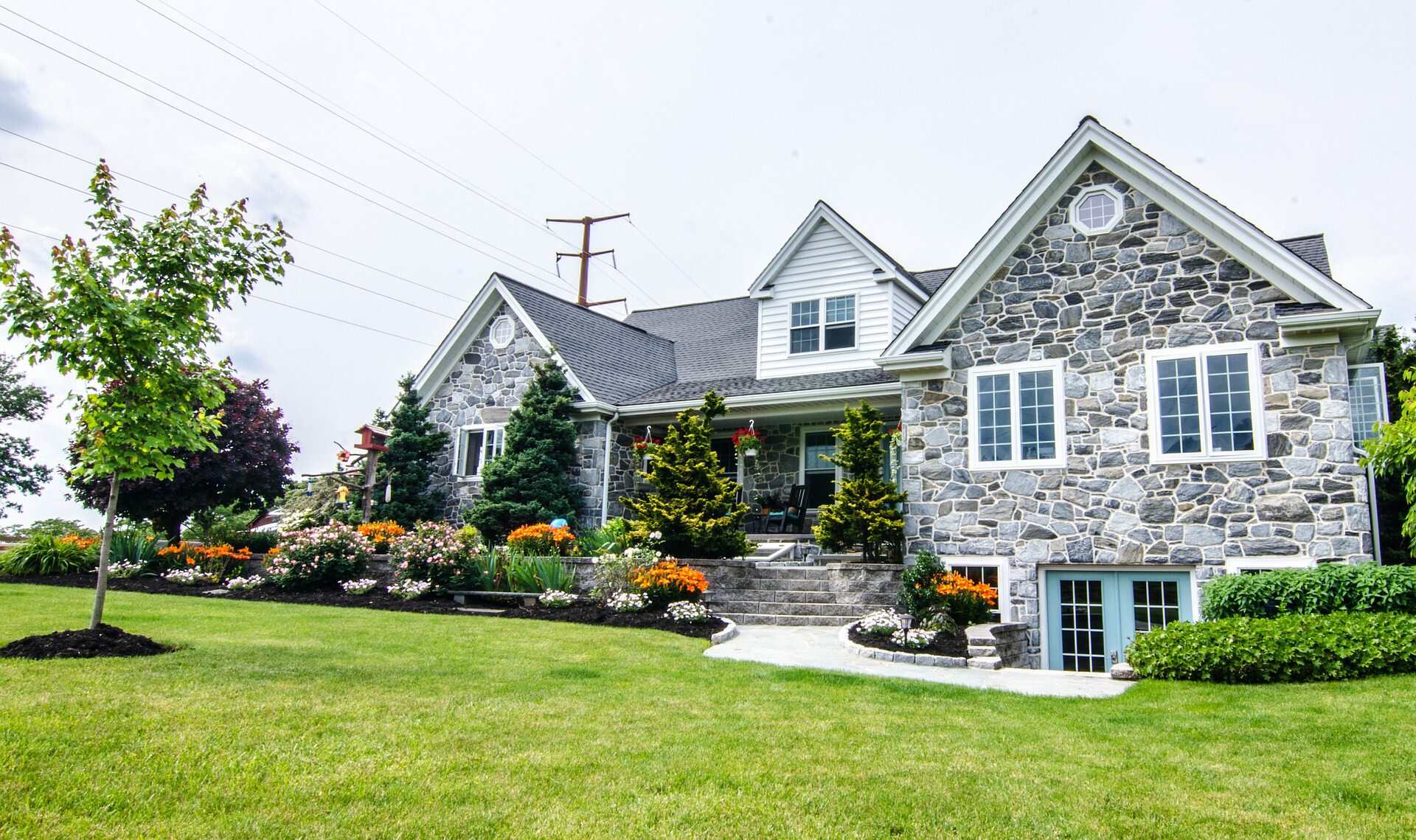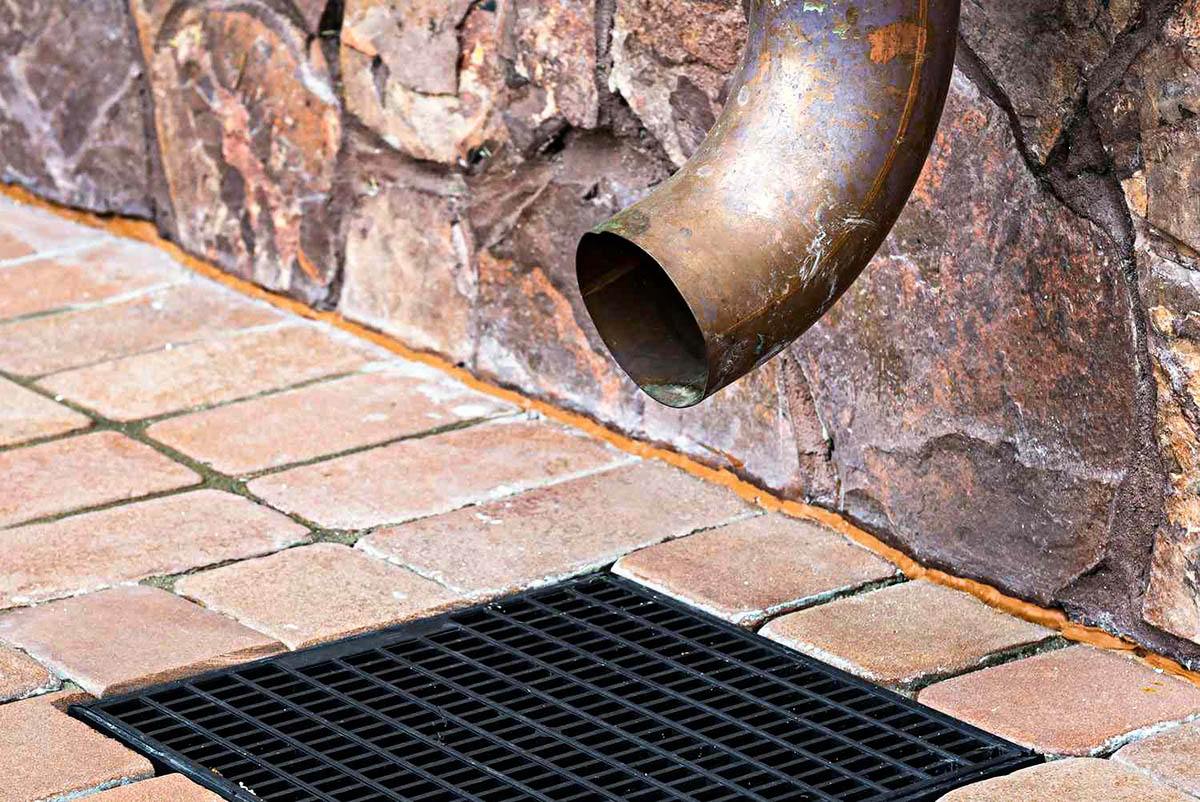Home>Renovation & DIY>Home Renovation Guides>How To Report Home Improvements To The Cherokee


Home Renovation Guides
How To Report Home Improvements To The Cherokee
Modified: January 4, 2024
Learn how to properly report home renovations to the Cherokee and ensure compliance with regulations. Our comprehensive guides will help you navigate the process seamlessly. Gain valuable insights and tips for successful home improvement reporting.
(Many of the links in this article redirect to a specific reviewed product. Your purchase of these products through affiliate links helps to generate commission for Storables.com, at no extra cost. Learn more)
Introduction: Understanding the Importance of Reporting Home Improvements to the Cherokee
When it comes to making enhancements to your home, it’s essential to understand the significance of reporting these improvements to the Cherokee. This process not only ensures compliance with regulations but also contributes to the preservation and documentation of your property’s history and value. By reporting home improvements to the Cherokee, homeowners actively participate in the maintenance of their community’s cultural and architectural heritage.
Furthermore, reporting home improvements to the Cherokee Nation demonstrates respect for the traditions and regulations that govern the land. It signifies a willingness to uphold the values and guidelines set forth by the Cherokee Nation, fostering a sense of unity and responsibility among homeowners.
Throughout this guide, we will delve into the reasons for reporting home improvements, the types of improvements that should be reported, the process of reporting, and the benefits that come with compliance. By understanding these aspects, homeowners can navigate the reporting process with confidence, knowing that their contributions are integral to the preservation and growth of their community.
Key Takeaways:
- Reporting home improvements to the Cherokee is important for legal compliance, preserving cultural heritage, and fostering community integrity. It ensures respect for traditions and contributes to the collective history of the community.
- Homeowners should report structural modifications, exterior enhancements, landscaping changes, historical preservation efforts, and utility upgrades to the Cherokee. This process helps document property evolution and aligns with cultural preservation goals.
Why Report Home Improvements: Exploring the Reasons for Reporting Home Improvements to the Cherokee
Reporting home improvements to the Cherokee holds multifaceted significance, encompassing legal, cultural, and communal aspects. Understanding the reasons for this reporting process is crucial for homeowners to comprehend its impact on their property and the community at large.
- Legal Compliance: One of the primary reasons for reporting home improvements to the Cherokee is to comply with legal requirements. The Cherokee Nation may have specific regulations and guidelines regarding property enhancements, and reporting ensures that homeowners adhere to these standards, avoiding potential fines or legal complications.
- Preservation of Heritage: By reporting home improvements, homeowners actively contribute to the preservation of the Cherokee cultural and architectural heritage. Each enhancement, whether minor or substantial, becomes a part of the collective history and legacy of the community. This preservation fosters a sense of pride and continuity, honoring the traditions of the Cherokee Nation.
- Property Documentation: Reporting home improvements serves as a means of documenting the evolution of a property. This documentation can be invaluable for future assessments, appraisals, or historical inquiries. It provides a comprehensive record of the changes made to the property, offering transparency and insight into its development over time.
- Community Integrity: When homeowners report their improvements, they contribute to the overall integrity and cohesion of the community. This process fosters transparency and accountability, creating a shared understanding of the changes occurring within the neighborhood. It also promotes a sense of unity and collaboration among homeowners, as they collectively uphold the standards set by the Cherokee Nation.
By exploring these reasons, homeowners gain a deeper appreciation for the impact of reporting home improvements to the Cherokee. It underscores the interconnectedness of legal compliance, cultural preservation, property documentation, and community integrity, emphasizing the value of this process beyond mere regulatory obligation.
What Home Improvements to Report: Identifying the Types of Home Improvements that Should be Reported to the Cherokee
When considering which home improvements should be reported to the Cherokee, it’s essential to discern the types of enhancements that fall within the purview of reporting. While the specific requirements may vary, certain categories of improvements typically warrant reporting to ensure compliance and contribute to the preservation of the community’s heritage.
- Structural Modifications: Any alterations to the structural integrity of a property, such as additions, demolitions, or significant renovations, should be reported to the Cherokee. This includes changes to the foundation, load-bearing walls, or roof structure, as they have a substantial impact on the property’s overall composition and stability.
- Exterior Enhancements: Improvements to the exterior of a home, including the installation of new siding, roofing, windows, doors, or the construction of outdoor structures such as decks or porches, typically require reporting. These alterations contribute to the property’s visual presence and may affect its historical and architectural significance.
- Landscaping and Site Development: Significant landscaping projects, land grading, or site developments that alter the property’s topography and visual landscape should be reported. This includes the installation of retaining walls, major tree removal, or the creation of new landscape features that impact the property’s overall aesthetics and environment.
- Historical Preservation Efforts: Any efforts to preserve or restore historical elements of a property, such as original architectural features, facades, or culturally significant elements, should be reported. This ensures that the Cherokee Nation can acknowledge and support endeavors to maintain the historical authenticity of properties within the community.
- Utility and Infrastructure Upgrades: Upgrades or modifications to essential utilities and infrastructure, such as electrical, plumbing, or HVAC systems, should be reported. These improvements are critical for the property’s functionality and safety, warranting documentation for regulatory and historical purposes.
By identifying these types of home improvements, homeowners can discern the scope of enhancements that necessitate reporting to the Cherokee. This understanding empowers them to navigate the reporting process effectively, ensuring that their contributions align with the preservation and compliance objectives set forth by the Cherokee Nation.
When reporting home improvements to the Cherokee, be sure to provide detailed documentation of the work done, including before and after photos, receipts, and any necessary permits or approvals.
How to Report Home Improvements: Step-by-Step Guide on Reporting Home Improvements to the Cherokee
Reporting home improvements to the Cherokee involves a systematic process that allows homeowners to document and communicate their property enhancements effectively. By following a structured approach, individuals can ensure that their improvements are appropriately acknowledged and aligned with the regulations and cultural preservation efforts of the Cherokee Nation.
- Evaluate the Scope of the Improvement: Before reporting any home improvement, it’s essential to evaluate its scope and impact. Determine whether the enhancement falls within the categories that typically require reporting, such as structural modifications, exterior alterations, landscaping changes, historical preservation efforts, or utility upgrades.
- Consult the Cherokee Nation Guidelines: Review the specific guidelines and requirements provided by the Cherokee Nation regarding home improvements. These guidelines often outline the types of improvements that necessitate reporting, along with the documentation and approval processes involved.
- Document the Improvement: Create comprehensive documentation of the improvement, including before-and-after photographs, detailed descriptions of the changes made, and any relevant historical or cultural significance associated with the enhancement. This documentation serves as a crucial record of the improvement for reporting purposes.
- Submit the Reporting Documentation: Depending on the Cherokee Nation’s procedures, submit the documentation of the improvement through the designated channels. This may involve digital submissions, physical forms, or communication with the relevant authorities or preservation committees within the Cherokee Nation.
- Engage in Dialogue and Review: Be open to engaging in dialogue with the Cherokee Nation representatives or preservation committees regarding the reported improvement. This may involve providing additional context, historical insights, or addressing any inquiries related to the enhancement.
- Obtain Approval or Acknowledgment: Upon review, obtain the necessary approval or acknowledgment of the reported improvement from the Cherokee Nation. This signifies compliance with the regulations and the acknowledgment of the enhancement’s contribution to the community’s heritage and integrity.
By following this step-by-step guide, homeowners can navigate the process of reporting home improvements to the Cherokee with clarity and diligence. This approach ensures that their contributions are documented, understood, and aligned with the cultural and regulatory frameworks set forth by the Cherokee Nation.
Benefits of Reporting Home Improvements: Discussing the Advantages of Reporting Home Improvements to the Cherokee
Reporting home improvements to the Cherokee yields a multitude of advantages, encompassing legal, cultural, and communal benefits that contribute to the preservation and growth of the community. Understanding these benefits underscores the significance of compliance and active participation in the reporting process.
- Legal Compliance and Avoidance of Penalties: By reporting home improvements, homeowners ensure compliance with the regulations and guidelines set forth by the Cherokee Nation. This proactive approach minimizes the risk of potential fines, penalties, or legal complications that may arise from unauthorized or unreported enhancements.
- Preservation of Cultural Heritage: Reporting home improvements contributes to the preservation of the Cherokee cultural and architectural heritage. Each documented enhancement becomes a part of the community’s collective history, fostering a sense of continuity, pride, and respect for the traditions and values of the Cherokee Nation.
- Property Documentation and Transparency: Through reporting, homeowners create a transparent and comprehensive documentation of the changes made to their properties. This documentation serves as a valuable record for future assessments, appraisals, or historical inquiries, providing transparency and insight into the evolution of the community’s architectural landscape.
- Community Integrity and Collaboration: The reporting of home improvements fosters a sense of community integrity and collaboration. It promotes transparency, accountability, and a shared understanding of the changes occurring within the neighborhood. By actively participating in the reporting process, homeowners contribute to the collective preservation and growth of the community.
- Recognition and Support from the Cherokee Nation: Reporting home improvements demonstrates respect for the Cherokee Nation’s traditions and regulations, potentially leading to recognition and support for preservation efforts. Acknowledgment from the Cherokee Nation signifies the value placed on the reported improvements and the homeowner’s commitment to upholding the community’s cultural and architectural legacy.
By recognizing and embracing these benefits, homeowners gain a deeper appreciation for the impact of reporting home improvements to the Cherokee. It underscores the interconnected nature of legal compliance, cultural preservation, property documentation, community integrity, and the potential for recognition and support from the Cherokee Nation.
Conclusion: Summarizing the Significance of Reporting Home Improvements and Encouraging Compliance
In conclusion, the process of reporting home improvements to the Cherokee holds profound significance, encompassing legal, cultural, and communal implications that contribute to the preservation and integrity of the community. By understanding the reasons for reporting, identifying the types of improvements that warrant reporting, and embracing the benefits of compliance, homeowners actively participate in the stewardship of their property and the collective heritage of the Cherokee Nation.
Reporting home improvements aligns with the legal requirements set forth by the Cherokee Nation, ensuring compliance and minimizing the risk of penalties or legal complications. It also serves as a testament to the respect and commitment homeowners hold for the cultural and architectural heritage of the community, fostering a sense of continuity, pride, and respect for the traditions and values of the Cherokee Nation.
Furthermore, the documentation of home improvements contributes to the transparency and historical record of the community’s architectural evolution, providing insight and context for future generations. This process fosters a sense of community integrity and collaboration, promoting transparency, accountability, and a shared understanding of the changes occurring within the neighborhood.
Ultimately, the reporting of home improvements signifies an active role in the preservation and growth of the community, potentially leading to recognition and support from the Cherokee Nation for preservation efforts. By embracing the significance of reporting home improvements and adhering to the guidelines and requirements set forth, homeowners contribute to the collective legacy and integrity of the Cherokee community.
Therefore, it is paramount to encourage and uphold compliance with the reporting process, recognizing its inherent value in preserving the cultural and architectural heritage of the Cherokee Nation. Through active participation and adherence to the reporting guidelines, homeowners demonstrate their commitment to honoring the traditions, values, and regulations that define and enrich the community’s collective identity.
By embracing the significance of reporting home improvements and actively participating in this process, homeowners play a vital role in the preservation, documentation, and growth of the Cherokee community, ensuring that its cultural and architectural legacy endures for generations to come.
Frequently Asked Questions about How To Report Home Improvements To The Cherokee
Was this page helpful?
At Storables.com, we guarantee accurate and reliable information. Our content, validated by Expert Board Contributors, is crafted following stringent Editorial Policies. We're committed to providing you with well-researched, expert-backed insights for all your informational needs.















0 thoughts on “How To Report Home Improvements To The Cherokee”